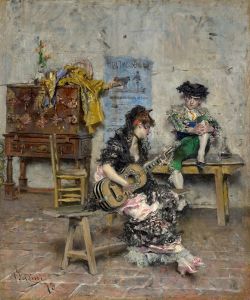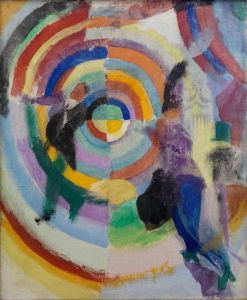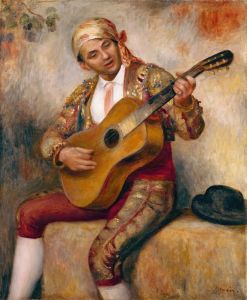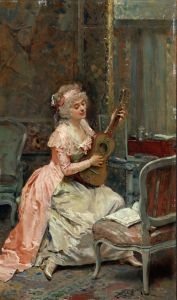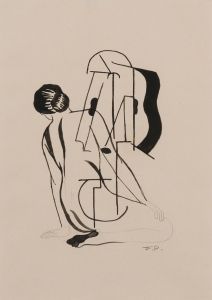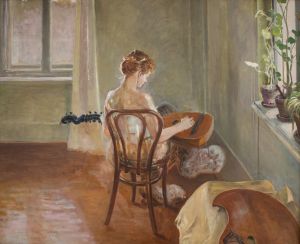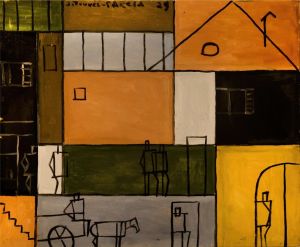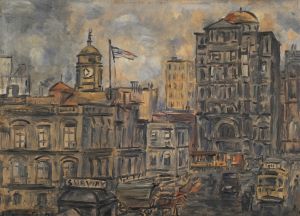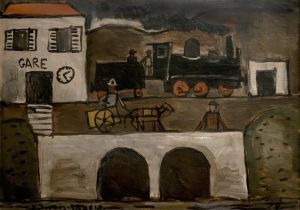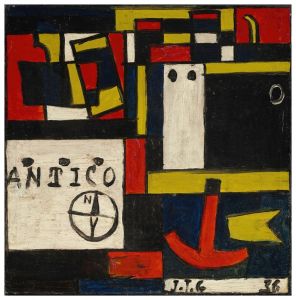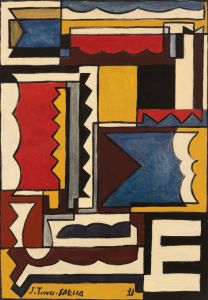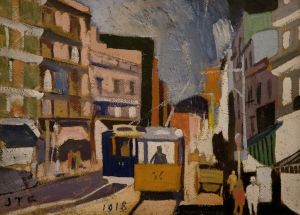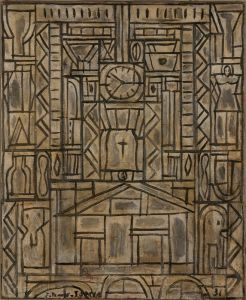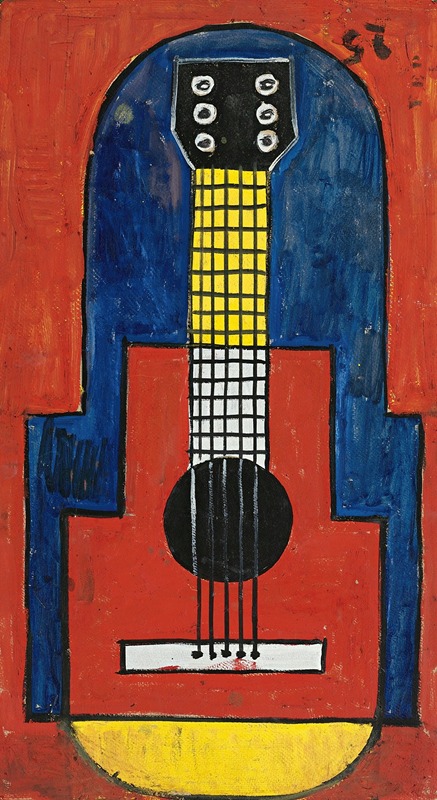
La Guitarra
A hand-painted replica of Joaquín Torres-García’s masterpiece La Guitarra, meticulously crafted by professional artists to capture the true essence of the original. Each piece is created with museum-quality canvas and rare mineral pigments, carefully painted by experienced artists with delicate brushstrokes and rich, layered colors to perfectly recreate the texture of the original artwork. Unlike machine-printed reproductions, this hand-painted version brings the painting to life, infused with the artist’s emotions and skill in every stroke. Whether for personal collection or home decoration, it instantly elevates the artistic atmosphere of any space.
Joaquín Torres-García was a prominent Uruguayan artist known for his contributions to modern art and his development of a unique style that blended elements of European avant-garde movements with Latin American cultural themes. One of his notable works is "La Guitarra," a painting that exemplifies his innovative approach to art.
"La Guitarra" is a part of Torres-García's exploration of Constructivism, a movement that emphasized abstract, geometric forms and the idea of art as a tool for social change. Torres-García was deeply influenced by his time in Europe, where he interacted with leading artists of the time, including Piet Mondrian and Theo van Doesburg. These interactions played a significant role in shaping his artistic philosophy and style.
The painting "La Guitarra" reflects Torres-García's commitment to integrating structure and symbolism. It features a guitar, a motif that recurs in his work, symbolizing music's universal language and its cultural significance. The guitar is depicted using a grid-like structure, a hallmark of Torres-García's Constructivist approach. This grid is not merely a compositional tool but also a symbolic framework representing order and harmony.
Torres-García's use of earthy tones and simplified forms in "La Guitarra" is characteristic of his mature style, which sought to create a visual language that was both modern and rooted in the ancient traditions of the Americas. This synthesis of the old and the new is a defining feature of his work, as he aimed to establish a distinct Latin American identity within the global art scene.
The painting also reflects Torres-García's interest in the concept of "Universal Constructivism," which he developed after returning to Uruguay in the 1930s. This concept was his attempt to create an art form that transcended cultural and geographical boundaries, drawing from both European modernism and pre-Columbian art. "La Guitarra," with its blend of abstract forms and cultural symbolism, embodies this philosophy.
Throughout his career, Torres-García was not only a painter but also a teacher and theorist. He founded the "Taller Torres-García," an influential art workshop in Montevideo, where he disseminated his ideas and mentored a new generation of artists. His teachings emphasized the importance of constructing a personal artistic language that was informed by both local and international influences.
"La Guitarra" is a testament to Torres-García's innovative spirit and his dedication to creating an art that was both universal and deeply personal. It stands as an example of how he successfully merged different artistic traditions to forge a new path in modern art. Today, his work continues to be celebrated for its visionary approach and its impact on the development of modern art in Latin America.





